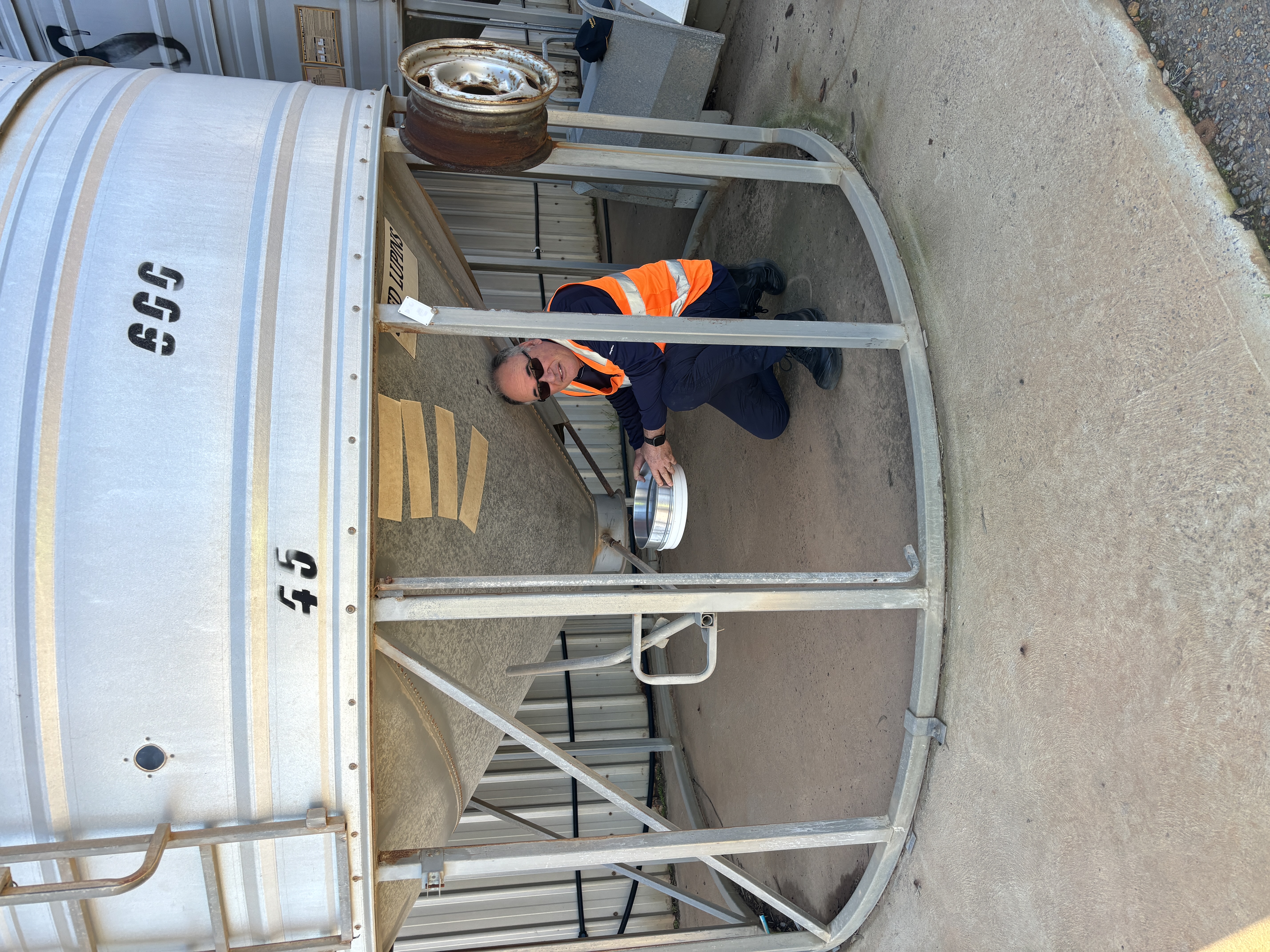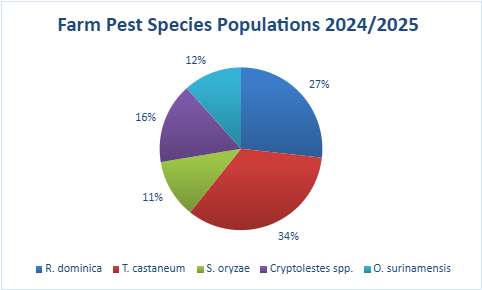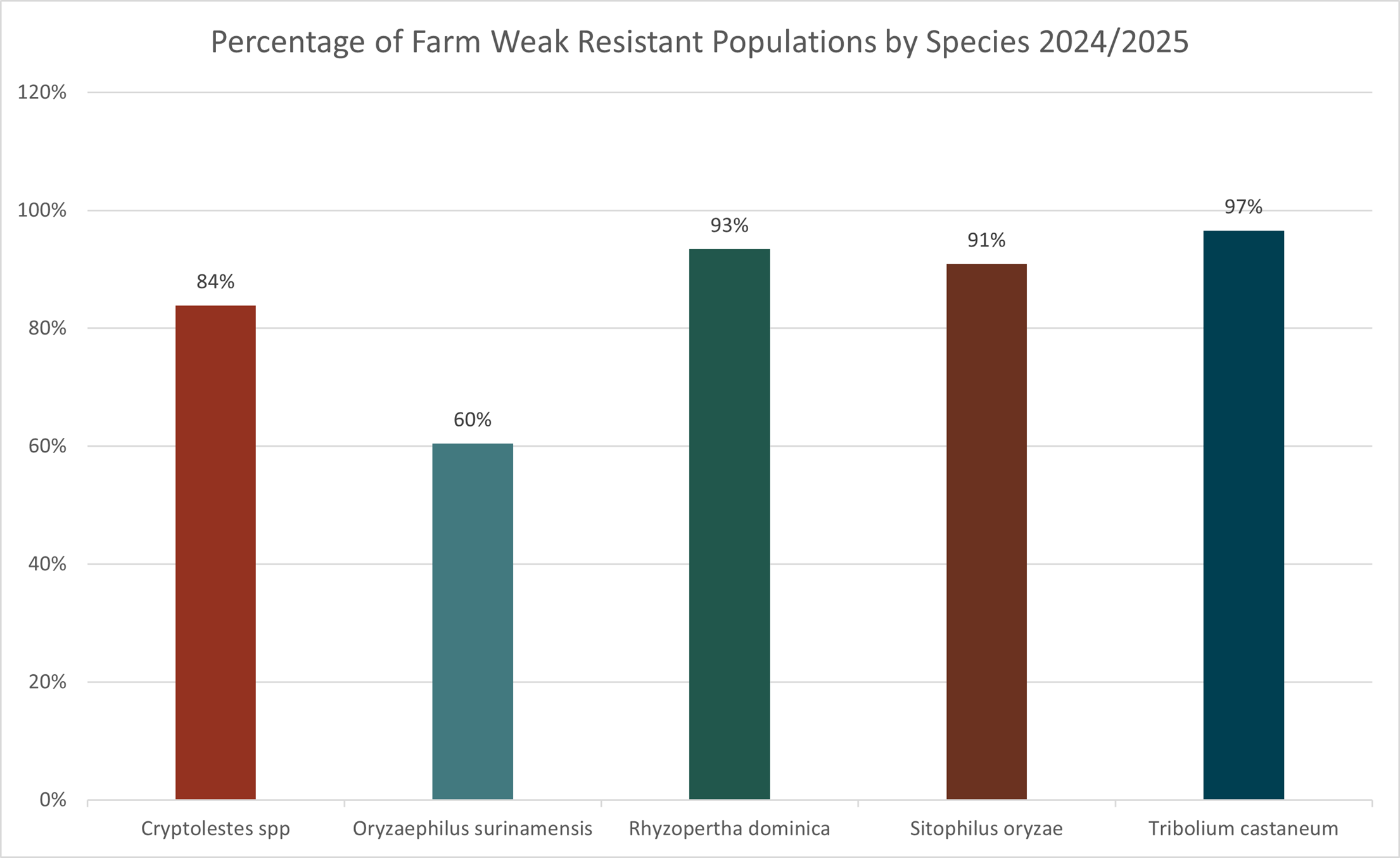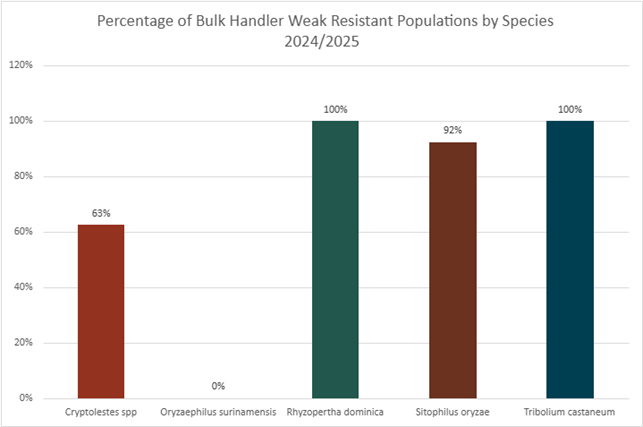
The Western Australian stored grain industry is heavily reliant on phosphine to meet export market demand for insect and residue free grain.
The industry is threatened by phosphine resistance in grain insects due to the widespread use of phosphine at several stages before export, and the lack of alternatives which provide the same advantages of ease of use, penetration, and cost.

In WA since 1984, grain insect resistance monitoring and management has been conducted at DPIRD, along with extension of responsible fumigation practices to help preserve the life of phosphine.
In 2019, Grains Research and Development Corporation (GRDC) invested into a national monitoring program which is used to determine the frequency and strength of resistance in storage pests to fumigants and grain protectants.
The program is led by the Queensland Department of Agriculture and Fisheries (QDAF) and runs collaboratively across three regions (western (DPIRD), southern (NSW DPI), northern (QDAF)).
About
- The program aims to survey samples from bulk handlers and 100 farms per financial year and undertake resistance diagnoses of pest populations.
- DPIRD’s focus is on monitoring to identify phosphine resistance, followed by effective treatment and eradication of strongly resistant strains, should they arise.
- WA grain insect samples are submitted by farmers, bulk handlers or collected by a network of DPIRD field staff. The strains of insects are screened for phosphine resistance in the laboratory.Phosphine resistance screening involves an initial rapid test, known as a 'Reichmuth' test.
This is a 30-minute test that is used to give a quick yes or no answer to indicate if resistant insects are present or not. Where positive, a validation sample is tested using the Food and Agriculture Organization of the United Nations (FAO) international standard test. This can differentiate levels of phosphine resistance that are higher than the commonly occurring level of ‘weak’ resistance. - Once testing is completed results will be sent to respective owners. Information will be included on pest management strategies.
- If strong resistance is detected DPIRD will work collaboratively with the property owner to create a management plan to eradicate the resistant strain.

Figure 1: Breakdown of different species found on farms during the 2024/2025 sampling period.

Figure 2: Percentage of weak resistance per species found on farm for 2024/2025 sampling period.

Figure 2: Percentage of weak resistance per species found at bulk handlers for 2024/2025 sampling period
Over recent years we have been testing grain insects intercepted at ports from overseas and post-entry quarantine intercepts for resistance to phosphine. The threat of introduced strong resistance is real and interstate quarantine inspections must be maintained.
Information on grain storage and managing stored grain insect pests is available from the GRDC Stored Grain Information Hub.
Found live insects post-fumigation?
Growers who find live insects following treatment can submit samples and request testing.
View the form
